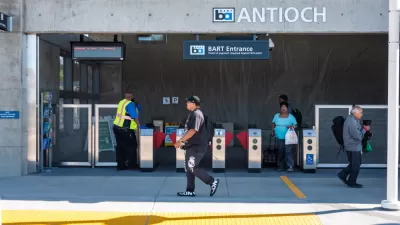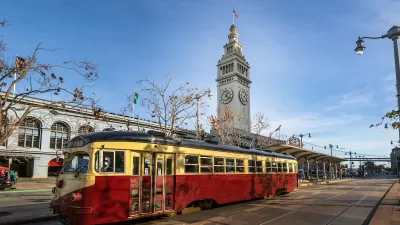With BART showing its age and struggling to meet growing demand, water-borne vehicles a potential panacea for transit in the San Francisco Bay Area?
"Twenty public ferries serving eight cities shuttle thousands of people across the [San Francisco Bay] every day, but there used to be many more," according to an article by Bryan Goebel. The question posed by Goebel, then, is how the amount of ferry service offered around the Bay Area might be increased to meet historical levels of service, or, for that matter, contemporary demand.
Interestingly, the biggest blow to ferry service in the bay occurred when the Bay Bridge opened in 1936, which also included a train, known as the Key System, when it first opened. In 2016, Goebel reports, "the Golden Gate and San Francisco Bay ferry systems carry more than 16,000 passengers each weekday," and overwhelmed transit and freeway systems in the region might provide the reason for improved ferry service.
Evidence of the growth of ferry service in the Bay Area includes two new ferry terminals expected to open by 2022, the new operations of private ferry companies, and a 20-year draft strategic plan created by planners at the Water Emergency Transportation Authority, according to Goebel.
FULL STORY: Why Isn’t There More Ferry Service in the Bay Area?

Planetizen Federal Action Tracker
A weekly monitor of how Trump’s orders and actions are impacting planners and planning in America.

Maui's Vacation Rental Debate Turns Ugly
Verbal attacks, misinformation campaigns and fistfights plague a high-stakes debate to convert thousands of vacation rentals into long-term housing.

San Francisco Suspends Traffic Calming Amidst Record Deaths
Citing “a challenging fiscal landscape,” the city will cease the program on the heels of 42 traffic deaths, including 24 pedestrians.

Defunct Pittsburgh Power Plant to Become Residential Tower
A decommissioned steam heat plant will be redeveloped into almost 100 affordable housing units.

Trump Prompts Restructuring of Transportation Research Board in “Unprecedented Overreach”
The TRB has eliminated more than half of its committees including those focused on climate, equity, and cities.

Amtrak Rolls Out New Orleans to Alabama “Mardi Gras” Train
The new service will operate morning and evening departures between Mobile and New Orleans.
Urban Design for Planners 1: Software Tools
This six-course series explores essential urban design concepts using open source software and equips planners with the tools they need to participate fully in the urban design process.
Planning for Universal Design
Learn the tools for implementing Universal Design in planning regulations.
Heyer Gruel & Associates PA
JM Goldson LLC
Custer County Colorado
City of Camden Redevelopment Agency
City of Astoria
Transportation Research & Education Center (TREC) at Portland State University
Jefferson Parish Government
Camden Redevelopment Agency
City of Claremont





























